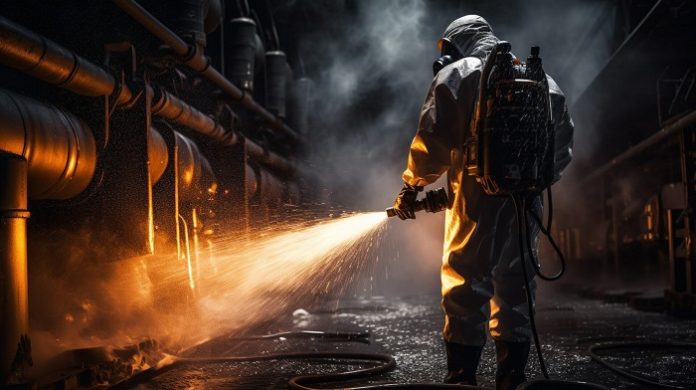Escalation factors are conditions, events, or circumstances that can worsen a hazardous situation or prevent control measures from effectively containing or mitigating a hazard. They amplify the consequences or likelihood of an accident, typically by impacting the performance of barriers designed to prevent or control incidents. Implementing multiple, independent safety barriers to prevent one failure from escalating the situation is critical in Process Safety Management.
Bolstering Barriers
Process Safety Management (PSM) is a structured approach that aims to prevent catastrophic events in industries dealing with hazardous chemicals. Central to PSM are safety barriers, which are systems and practices designed to prevent incidents or mitigate their consequences. However, the effectiveness of these barriers can be compromised by escalation factors—conditions that increase risks by weakening safety barriers.
Safety Barriers and Escalation Factors
Safety barriers are layers of defence implemented to prevent or mitigate hazardous events. They can be:
- Physical Barriers: Equipment such as pressure relief valves, firewalls, or containment systems.
- Procedural Barriers: Operational protocols, emergency response plans, and maintenance schedules.
- Human Barriers: Operators’ skills, training, and decision-making capacity.
An escalation factor is any condition that undermines these barriers.
Consider the analogy of driving a car:
The car’s brakes (safety barrier) allow for controlled stopping.
If the roads are slippery due to rain or if the brakes are poorly maintained, their effectiveness is reduced. The rain and inadequate maintenance are escalation factors, increasing the likelihood of an accident.
In chemical plants, analogous situations arise where factors such as equipment degradation, extreme environmental conditions, or human error compromise the integrity of safety barriers.
Types of Escalation Factors
Escalation factors can broadly be classified into three types:
- Technical
- Human
- Environmental
Technical Escalation
Technical factors relate to equipment failure, poor maintenance, or design flaws that compromise safety barriers.
The Flixborough disaster of 1974 remains a harrowing example of how technical escalation factors can lead to catastrophic outcomes in industrial settings. The incident occurred at a chemical plant in England that manufactured caprolactam, a key raw material for nylon production. Central to the process was the use of cyclohexane, a highly flammable liquid, which was circulated through a series of reactors under pressure.
Weeks before the disaster, a leak was discovered in one of the reactors. To maintain production, engineers devised a temporary solution: they isolated the damaged reactor and installed a bypass pipe to connect the remaining reactors. This pipe, made of flexible bellows, was not subjected to proper engineering analysis or rigorous testing. Its design was based on visual judgment and was not pressure-rated to handle the operational stresses of the system.
On June 1, 1974, the bypass pipe failed catastrophically, releasing a massive quantity of cyclohexane into the atmosphere. The resulting vapour cloud spread rapidly across the plant, creating a highly flammable environment. Moments later, the cloud found an ignition source, likely a furnace or electrical equipment, and a devastating explosion ensued.
The blast killed 28 workers, injured 36 others, and caused extensive destruction to the plant and surrounding areas. Entire buildings were flattened, and windows were shattered in nearby villages, illustrating the sheer force of the explosion.
The disaster highlighted technical escalation factors that led to the failure. The bypass pipe was hastily assembled without proper design consideration. No provision was built into the system to handle such critical failure, and the lack of formal hazard assessments allowed this temporary solution to bypass standard safety checks.
Human Escalation
Human factors, including fatigue, inadequate training, and procedural violations, can lead to errors that weaken safety barriers.
The BP Texas City Refinery explosion in 2005 offers a stark example of how human escalation factors can undermine safety systems and lead to catastrophic outcomes. At the heart of the incident was the start-up of an isomerisation unit, a process that involved handling volatile hydrocarbons. As operations commenced, a series of human errors and procedural lapses created the conditions for disaster.
During the start-up, operators overfilled a distillation tower with a mixture of hydrocarbons, far exceeding its safe capacity. Compounding this issue, the level indicator, which could have warned the operators, was faulty, and no additional safeguards were in place to detect the excessive volume. Miscommunications among the staff led to assumptions about the tower’s status, further exacerbating the situation.
Unaware of the danger, operators continued the start-up procedure, and pressure built up within the tower. Eventually, the excess hydrocarbons were released into a blowdown stack—a venting system designed to handle small releases. However, this system discharged directly into the atmosphere rather than a flare, as was common industry practice by then. The discharged hydrocarbons formed a vapour cloud that spread across the refinery.
The final escalation came when an idling vehicle in the area ignited the vapour cloud. The resulting explosion killed 15 workers, injured over 170 others, and caused extensive damage to the facility. Investigations revealed that many of the workers who died were in temporary trailers placed too close to hazardous process areas, a decision made without proper risk assessment.
The disaster highlighted critical human factors that escalated the incident. Operators were fatigued due to long shifts and lacked adequate training on managing abnormal process conditions. Safety procedures were either ignored or poorly implemented, and decision-makers underestimated the risks associated with the blowdown stack design and trailer placement.
This tragedy underscores the importance of fostering a strong safety culture where procedures are rigorously followed, and workers are well-trained to recognise and respond to abnormal situations. Human escalation factors—fatigue, miscommunication, and procedural neglect—can significantly weaken safety barriers, emphasising the need for robust systems that prioritise operational discipline and workforce well-being.
Environmental Escalation
The Arkema chemical plant incident in 2017, during Hurricane Harvey, stands as a compelling example of how environmental escalation factors can compromise safety systems. Located in Crosby, Texas, the facility manufactured and stored organic peroxides, highly sensitive to temperature fluctuations. These peroxides require constant refrigeration to prevent them from decomposing and potentially igniting.
As Hurricane Harvey brought unprecedented rainfall, the surrounding area experienced severe flooding. The rising waters inundated the plant, knocking out its primary power supply. Backup power generators, which were critical for maintaining the refrigeration systems, were also submerged and rendered inoperable. This cascading failure left the plant without any means of cooling the temperature-sensitive chemicals.
As the organic peroxides heated up, they began to decompose, creating a situation fraught with potential danger. Despite the plant’s safety measures and evacuation of personnel, the chemicals eventually ignited, leading to fires and the release of toxic smoke. Emergency responders had to establish an exclusion zone, forcing nearby residents to evacuate as a precautionary measure.
This incident underscores the vulnerability of industrial facilities to extreme weather events, particularly those exacerbated by climate change. The flooding overwhelmed the plant’s defences, which had not been designed to withstand such severe conditions. The reliance on electrical refrigeration systems, without passive or redundant cooling methods, further magnified the risks when power was lost.
The Arkema incident highlights the critical need for industries to anticipate and adapt to environmental escalation factors. Facilities must be designed to withstand extreme weather scenarios, and emergency response plans must account for cascading failures, such as simultaneous flooding and power outages.
Epilogue
Escalation factors represent a critical dimension of process safety management, as they weaken the effectiveness of safety barriers and amplify risks. From technical flaws to human errors and environmental conditions, the chemical industry is vulnerable to a wide range of factors that can lead to catastrophic events. Ultimately, addressing these factors requires a holistic approach, combining technical rigour, human vigilance, and organisational commitment to safety.
Readers’ responses may be sent to: k.sahasranaman@gmail.com or chemindigest@gmail.com
































